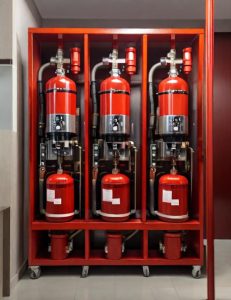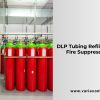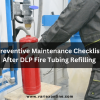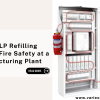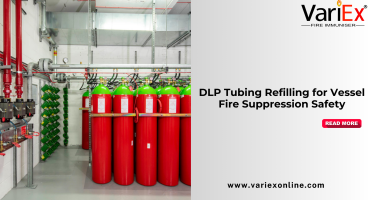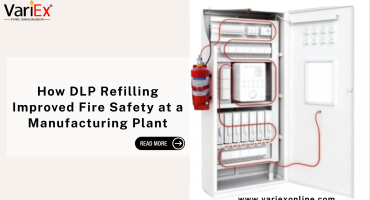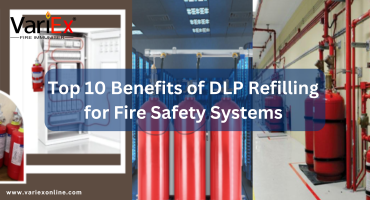![]()
Fire Immuniser
+91-7829629111
Email: info@variex.in
Varistor Technologies Pvt. Ltd.
Block-1, First Floor, Ardente Office One, Hoodi Circle, ITPL Main Road, Bengaluru, Karnataka 560048, IN
What Are Systems Of Fire Fighting?
Fire can cause extensive damage to property and pose a significant threat to human life. As a result, the development and implementation of effective fire-fighting systems are crucial to ensure rapid response, minimize casualties, and prevent the spread of flames. In this article, we will explore the different systems used in fire fighting, highlighting their key features, technologies, and applications. Understanding these systems is essential for individuals, property owners, and fire-fighting professionals in order to enhance safety and mitigate the devastating impacts of fire.
The Water-Based System
One of the most common fire-fighting systems is the water-based system. Due to its simplicity, efficiency, and cost-effectiveness, people widely use this traditional approach. This system utilizes various components, including fire hydrants, water hoses, and sprinklers, to deliver a steady flow of water to extinguish fires.
Strategically position fire hydrants throughout buildings and outdoor areas to provide a ready source of water. Connect these hydrants to pressurized water supplies to enable a strong and consistent water flow. Water hoses, on the other hand, are flexible tubes that allow firefighters to reach different areas effectively. Connect them to the hydrants and maneuver them to deliver water directly onto flames.
Sprinkler systems are another critical element of water-based fire-fighting systems. A network of pipes with attached sprinklers automatically releases water when heat is detected in these systems. This early response greatly aids in containing fires, preventing their spread and giving occupants more time to evacuate.
The Chemical-Based System
Chemical-based fire-fighting systems utilize various substances to suppress or extinguish fires. These systems are particularly effective against specific classes of fires, such as those fueled by flammable liquids or electrical equipment. Two common types of chemical-based systems are foam suppression systems and carbon dioxide-based systems.
People commonly use foam suppression systems in environments where flammable liquids are present, such as industrial warehouses or fuel storage facilities. When activated, these systems discharge foam mixtures, creating a layer that prevents the release of flammable vapors and reduces heat transfer to the liquid. This inhibits the fire's ability to sustain itself, leading to its suppression or extinguishment.
People primarily employ carbon dioxide (CO2) based systems in areas housing valuable electrical equipment, like server rooms or power stations. Carbon dioxide is a non-conductive gas that displaces oxygen, effectively suffocating the fire. The system releases CO2 in high concentrations, flooding the area and suppressing the flames without damaging sensitive equipment.
The Gaseous System
Gaseous fire-fighting systems utilize specialized gases or mixtures of gases to suppress fires. Typically, people employ these systems in enclosed spaces where conventional water-based systems are not suitable, such as data centers, museums, or libraries. Unlike water or chemical-based systems, gaseous systems do not leave behind residues that could harm sensitive electronic equipment, artifacts, or documents.
The most commonly used gases in gaseous fire-fighting systems include inert gases like nitrogen, argon, or carbon dioxide, as well as clean agents such as FM-200 or Novec 1230. Store these gases in pressurized cylinders connected to a network of pipes and nozzles. When a fire detection system detects a fire, rapidly discharge the appropriate gas, quickly reducing the oxygen levels and suppressing the flames.
The Specialized Systems
In addition to the aforementioned systems, there are several specialized fire-fighting systems designed to address unique fire hazards. For instance, people use high-expansion foam systems to fight fires in confined areas or areas with limited ventilation, such as shipboard compartments or storage tanks. These systems generate voluminous foam that displaces oxygen, suffocating the fire.
Similarly, deluge systems are used in specific environments where rapid fire suppression is required. These systems feature open nozzles that release large quantities of water or specialized foam over a wide area. Deluge systems are often found in high-risk locations such as chemical plants or critical infrastructure facilities.
Conclusion
Fire-fighting systems are essential for protecting lives and property from the devastating effects of fire. Whether using water-based systems, chemical-based systems, gaseous systems, or specialized systems, selecting the appropriate system requires a thorough assessment of the fire hazards present. By understanding the features and applications of each system, individuals, property owners, and fire-fighting professionals can effectively safeguard against fire, minimize damages, and ensure the safety of all stakeholders. Investing in robust fire-fighting systems is not only a legal requirement, but also a moral responsibility to protect our communities and resources from the destructive force of fire.
Frequently Asked Questions
1. What is a wet pipe sprinkler system?
In a wet pipe sprinkler system, people maintain water constantly present in the pipes and ready to discharge through the sprinkler heads when a fire is detected.
2. What is a dry pipe sprinkler system?
A dry pipe sprinkler system is a fire protection system that uses pressurized air or nitrogen in the pipes instead of water. When a fire is detected, the air is released, allowing the water to flow through the sprinkler heads and extinguish the fire.
3. What is a pre-action sprinkler system?
A pre-action sprinkler system combines elements of both wet and dry pipe systems. It requires two separate activation events to trigger water discharge: first, the fire detection system detects a fire, and then a supplemental detection system confirms the presence of heat or smoke before the water is released.
4. What is a deluge sprinkler system?
A deluge sprinkler system is typically used in high-risk areas where rapid fire spread is a concern. The system keeps all sprinkler heads open, and when activated, releases a large volume of water simultaneously throughout the protected area.
5. What is a foam-based fire suppression system?
A foam-based fire suppression system uses foam instead of water to extinguish fires. The foam is applied to form a blanket, suppressing flammable vapors, cooling the fire, and preventing re-ignition.
6. What is a gaseous fire suppression system?
A gaseous fire suppression system uses inert gases or chemical agents to suppress fires. These systems are commonly used in areas where water may cause significant damage, such as data centers or archives.
7. What are the benefits of a fire sprinkler system?
Fire sprinkler systems provide an immediate response to fires, helping to control or extinguish them before they can spread. They can significantly reduce property damage, protect lives, and provide peace of mind.
8. How often should fire sprinkler systems be inspected?
Fire sprinkler systems should be inspected by a qualified professional at least once a year. Some jurisdictions may require more frequent inspections.
9. Can fire sprinkler systems be installed in existing buildings?
Yes, fire sprinkler systems can be retrofitted in existing buildings. While it may involve more complex installation, it is possible and highly recommended to enhance fire safety.
10. Are fire sprinkler systems expensive to maintain?
The cost of maintaining a fire sprinkler system is minimal compared to the potential damages caused by a fire. Annual inspections, regular maintenance, and prompt repairs ensure the system's reliability.
Final Say
We at VariEx.in or Variexonline.com have mastered the art of designing, installing, inspecting, and fixing automatic sprinkler systems with the help of our in-house team, which is capable of delivering the fire sprinkler services you need, whether large or small and at affordable cost.
To schedule a fire sprinkler installation, or you think our services could benefit your commercial property, contact us online or give us a call at, 7829629111
"WHAT YOU CAN READ NEXT"
 Read more +24 November 2023 in Fire Extinguisher
Read more +24 November 2023 in Fire ExtinguisherWhat types of fire extinguishers are available for different fire classes?
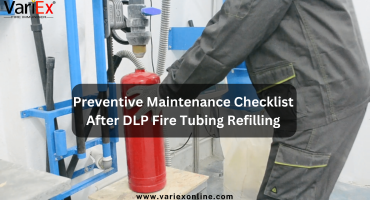 Read more +11 July 2025 in Fire Suppression
Read more +11 July 2025 in Fire Suppression

